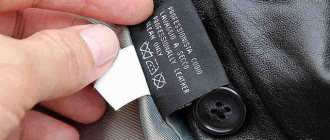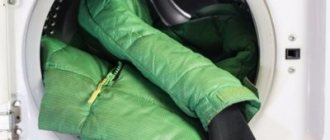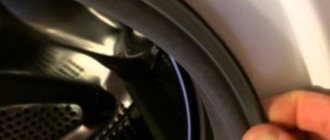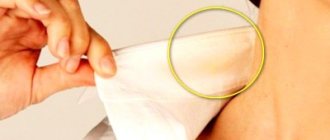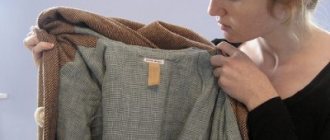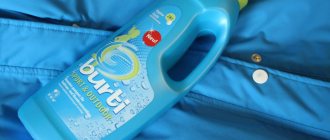Which areas of the shirt get dirty the most?
When sewing, various fabrics are used, the most popular are cotton items. This material is especially suitable for lovers of light natural fabrics. Flax is a little rougher.
Shirts made of cotton and viscose are easy to wash, and ironing them is a pleasure. In addition, they keep their shape longer, so washing does not greatly affect the quality. Silk and satin products attract buyers with lightness and elegance. But all shirts have problem areas: collar, cuffs, armpit area. Due to street dust and car exhaust gases, the collars become dirty. Due to the strong secretion of sweat, marks are formed in the armpit area. These areas are difficult to wash. Friction not only leads to abrasions and stains, but also makes it impossible to remove stains. Therefore, washing shirts requires a special approach.
Types of fabrics and their features
In order to decide which washing method to use, it is necessary to take into account the main material of the product. Also, the type of fabric is a key factor in choosing the appropriate mode and the right temperature.
Cotton
Products made from cotton are universal and least capricious, perfect for both hand and machine washing. However, items made from this particular material most easily lose their presentable appearance, become less bright and acquire stains faster than similar items made from other types of fabrics. Cotton items shrink easily if the temperature is incorrectly selected, but they lose no more than 5% of the original size of the product. Cotton shirts can also use bleach.
Linen
Linen products are capable of severe shrinkage, and if you get a shirt from a low-quality manufacturer, then after washing you can get the item down to one size smaller. It is best to wash a linen shirt at minimum temperatures with the addition of softening agents. However, you can use both types of washing, excluding, in the case of manual washing, increased mechanical squeezing, which will lead to serious deformation of the material. Also, overdrying is very dangerous for linen shirts, in which case the fabric will lose its basic properties and can easily tear.
Silk
For a silk shirt, it is necessary not only to create the most delicate washing conditions, but also to avoid twisting and wringing. As a washing powder, you should use products specially designed for this material, marked “Silk” on the packaging. If there is no such product, then you can use liquid gel for washing baby clothes. And to preserve the original shine, you should resort to the traditional method and add a couple of tablespoons of vinegar solution when soaking.
Synthetics
Synthetic products are the least susceptible to changes during washing. Items made from such materials rarely lose color or shrink, but synthetic shirts cannot withstand high temperatures and high-speed spins. In such cases, it is most likely to spoil the color of the product and get severe creases over the entire surface, which cannot be removed even with the help of a powerful steamer. Also, in the case of synthetics, it is recommended to avoid manual twisting; the item should be hung on hangers and allowed to drain on its own.
Preparation process
Before putting the item in the washing machine, you need to carefully prepare it: fasten all the buttons, including those on the cuffs. This preparation is necessary to ensure that clothes do not crumple when washed.
We'll tell you how to wash white shirts: only on the delicate wash program, while setting the minimum speed. You need to wring out the shirt manually and weakly. Machine drying is strictly prohibited if you want to iron your shirt later without problems. Do you have very stubborn stains on your clothes? Use special products that contain bleach (in the case of washing white shirts). The stain remover will be able to remove “fresh” stains, but it will not be able to remove old stains.
Important! If clothing has heavily soiled areas, do not rub them with your hands, as this may weaken the fabrics that secure the cuffs and collar. The shirt will be damaged and unusable!
You should not have any problems using the chemical, as there should be clear instructions for use on the back.
Removing contaminants
On white shirts, some parts become dirty over time. Especially it concerns:
- a gate at which a yellow stripe appears at the break;
- cuffs, due to their frequent contact with various surfaces;
- armpit area where traces of sweat remain.
How to remove these contaminants?
How to remove yellow stripes from a man's shirt collar
Yellow streaks appear due to sebum and sweat remaining on the collar due to friction against the neck. Dirt and dust settle on them, penetrating deep into the fabric and eating into it. Ironing additionally “welds” the dirt. It becomes quite difficult to wash it off.
There are several most effective ways to get rid of the unpleasant yellow stripe on your collar:
- Laundry soap. Dip the collar in warm water. Apply soap to it thoroughly. Place the shirt in a plastic bag and leave for 1 hour. After the specified time, carefully rub the collar with your hands. If necessary, additionally carefully go over the collar with a soft brush. Rinse to remove all soap.
- Stain remover. Mix the product with a small amount of warm water. Finish the collar. After 5 minutes, rinse with cool water.
Advice! To remove a yellow stripe from the collar of a white shirt in the absence of a stain remover, you can use hair shampoo or dishwashing detergent, increasing the exposure time to half an hour.
After using one of the above methods, wash your shirt either by machine or by hand, depending on the type of fabric.
Removing stains at home
We will share the secrets of removing heavy stains from white clothes. You can get rid of problem areas on the collar using laundry soap. But complex stains left by food require more effort.
If your shirt is stained with tea or coffee, then solutions of glycerin and ammonia or peroxide and ammonia will help against such stains.
You can remove grease stains using toothpaste, baking soda with lemon juice, or dish detergent. Before the automatic washing machine starts washing the shirt, you should first rub the stain with the solution.
After staining clothes with ink, rub the stain with alcohol.
Traditional care
Shirts are washed differently by hand. First, you need to wash off existing stains and particularly dirty areas: moisten with stain remover diluted in water. Ammonia with glycerin or soda with lemon juice can also cope with dirt. Laundry soap, which just needs to be rubbed onto the fabric, has a similar effect.
Next we proceed to washing:
- fill the basin or bathtub with warm water;
- dilute a suitable gel or powder;
- dip the shirt into the solution and wash it, carefully massaging the fabric;
- rinse;
- Lightly squeeze the product without twisting.
Shirts should not be wrung or twisted.
Experienced housewives recommend washing white shirts only by hand. Gentle cleansing is less risky, but more effective due to the use of natural bleaches.
Washing shirts at SMA
It takes a lot of effort to ensure you always have clean clothes hanging in your wardrobe. Most people whose status requires them to wear business attire eventually wonder how to wash a shirt in a washing machine. We will tell you a few secrets that will help you wash your clothes correctly, easily and quickly. At the same time, you will not damage the item and will be able to enjoy its cleanliness and freshness for a long time.
Mode
In order for the item to remain just as neat and not shrink when washed, you should choose the appropriate parameters. First, let's decide at what temperature to wash the shirts. It is optimal to wash the item at a temperature of 40 degrees and a spin speed of 900 rpm. If your washing machine has a delicate wash function, then this is the most suitable mode for a shirt. You can also set the hand wash program or select the “Quick 30” mode.
Don't forget about buttons - they should be fastened to prevent unwanted damage and maintain the shape of the garment. Do not use the drying mode, as the shirt will become very wrinkled and will be difficult to iron.
Some useful tips
To keep things snow-white, it is better to wash them by hand. If you prefer to machine wash, be sure to choose the pre-soak mode. Use fabric softeners. And most importantly, do not wash white items with other colored items.
Important! To avoid damaging the material, do not twist the shirt after removing it from the drum. Hang it on a hanger to dry naturally.
Adding 2 tablespoons of vinegar to the powder container along with the detergent will help add shine to a silk shirt.
If you follow these recommendations, you will get effective and high-quality results. Happy washing!
Let's use an automatic machine
If machine wash is allowed, you can start loading the shirt into the drum. But before you turn on the “Start” button, you should adjust the cycle settings and take into account several related points. We are talking about the following nuances:
- We set the temperature for delicate fabrics within 30-40 degrees, for cotton and linen we increase it to 90 degrees, and for synthetics we set it to 50;
- we give preference to gels, since powder mixtures dissolve less well at low temperatures and are less easy to rinse out of fabric;
- turn off spinning, ironing and automatic drying (delicate fabrics do not like excessive mechanical stress and are deformed at high speeds);
- add an additional rinse;
- We wash viscose shirts in special bags, which will protect the fragile material from possible damage.
It is recommended to wash viscose shirts only in special protective bags.
Modern machines have many modes that simplify the process of using the machine. It is enough to select “Wool”, “Delicate”, “Synthetics” or “Cotton” with the programmer and just check the automatically specified settings. If everything is in order, we start the cycle and wait for the measured time.
Wine stains
It is not difficult to remove red wine from white fabric if you immediately react to the stain. It is strongly not recommended to delay cleansing, as completely absorbed and dried “redness” will damage the item irrevocably. Therefore, we do not hesitate and act immediately.
- Lay the shirt out on the table, not allowing the stain to transfer to the clean fabric.
- Fill the wine mark with warm wine or vodka.
- Add salt, pour boiling water on top and leave for 1-2 hours.
- Dry with a dry cloth.
- Cover the trail with powdered citric acid and pour citrus juice on top.
- We wash by hand or in a machine.
If the shirt material is too thick, then it is better to go the other way and treat the contaminated area with liquid Domestos. Lubricate the wine stain, leave for 5 minutes and rinse. Be sure to load it into the washing machine and run a full cycle.
It is easier to remove white wine residue from a shirt. Crushed ice on the laundry and washing in a solution of soap and soda will help get rid of wine stains. A shirt is also effectively cleaned when, after washing, the mark is rubbed with laundry soap or washed with a water-alcohol mixture. In severe cases, mix ammonia, turpentine oil and soap, and then lubricate problem areas with the mixture.
Do I need to wash a new one before wearing it for the first time?
The need to wash new clothes is a controversial issue. Many buyers are inclined to wash the shirt before putting it on for the first time.
During the production of clothing, its transportation and storage, it is exposed to chemicals, accumulates dust, and is touched by dozens of people. Despite the brightness of the colors and the freshness that is inherent in a new thing, it can be fraught with health hazards.
For shirts that have just been purchased, it is advisable to wash them in cool water . This can be done manually or using an automatic machine in a delicate mode without heating the water and strong spinning. Proper washing will not damage the new shirt.
Washing before the first wear will allow you to wash away any remaining dyes from the fabric, as well as substances that are often used to treat products - anti-caking, anti-mold, etc.
How to dry?
The method for drying white shirts will depend on the fabric they are made from. This is the only way to avoid their deformation.
Best recommendations:
A high-quality product that practically does not wrinkle is hung by the collar on a rope. It is better if drying is done in the fresh air.- A shirt made of delicate fabric is first placed on hangers and then on the balcony.
- A viscose shirt is first dried in a horizontal position: laid out on a previously laid terry towel.
When all the moisture has left the item, the item is hung on hangers and allowed to dry.
Before sending the washed shirt to dry on hangers, fasten it with all the buttons and straighten the collar, as well as all the folds on the fabric.
Manually
Hand washing shirts allows you to have complete control over the washing process. But this method is characterized by high labor costs.
Processing shirts by hand is indispensable in cases where you need to remove stains , or when it is necessary to process particularly delicate items.
At the same time, the choice of detergent, water temperature and spin capability are no less important than with automatic washing.
More details about the question can be found here.


